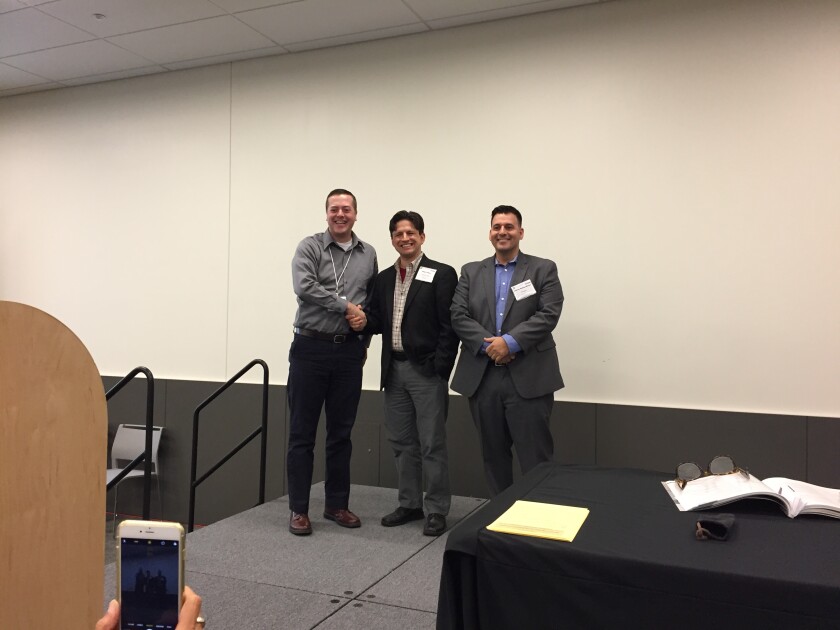The BYU Compliant Mechanisms Research Lab enjoyed enormous success at this year’s Design Engineering Technical Conferences hosted by the American Society of Mechanical Engineers. Students claimed first and second place in the Graduate Division of the 2017 ASME International Student Mechanisms Design Competition in Cleveland, Ohio, in August.
ASME selected Jared Butler, a graduate student from Riverton, Utah, as one of six finalists for the competition. Butler, who went on to win first place, saw his podium finish as icing on the cake.
“Honestly, when I submitted [my project] I thought, ‘I don’t have a prayer against some of these people,’” Butler said. “So it’s rewarding just to be recognized with those kinds of people…and to be able to go there and represent BYU, and the things we do here, in a positive way.”
Butler’s award-winning entry, “Origami Bellows Containing Microgravity Drilling Debris,” represents thousands of hours of his hard work. He designed origami bellows for NASA to use in outer space in order to shield technical components of spacecraft from debris. His design is unique because unlike traditional bellows that use heavy, inflexible materials, the origami bellows is lightweight and flexible, yet also extremely durable.

Butler is hopeful NASA will soon implement his design on spacecraft for upcoming missions. “At this point, our bellows is on a path to flight,” he said. The bellows has a NASA Technology Readiness Level of seven out of nine, and just has to clear environmental testing before it is proclaimed ready for spaceflight.
BYU graduate students Kyler Tolman, Erica Crampton and Chad Stucki also competed in the event last month, receiving second place for their entry, “Design of an Origami-Inspired Deployable Aerodynamic Locomotive Fairing.”
The trio began working together on the project in January of 2016, and have since invested thousands of hours of research and testing in order to design a collapsible origami fairing that would improve the aerodynamics of a locomotive.
Their research, done on behalf of a prominent railroad company, presented interesting challenges for the team.
“There are a lot of rules in the railroad industry” Tolman said. “A lot of times, they would say, ‘the design won’t work because of [safety regulations],’ so we would have to come up with a creative solution to work around those constraints so that we could still meet the overall objective.”
The team faced internal obstacles as well as they struggled to create a design that was both aerodynamic and foldable. “Most other origami things that we do here in the lab [are] primarily driven by function or motion…so having something like aerodynamics drive it was a unique challenge,” Crampton said.
While Crampton and Stucki will officially graduate from BYU with their master’s degrees in December, Tolman has already received his master’s degree, and currently works for Toyota in Detroit. All three expressed that this project provided essential real-world experience and encouraged other students to take advantage of similar opportunities.
